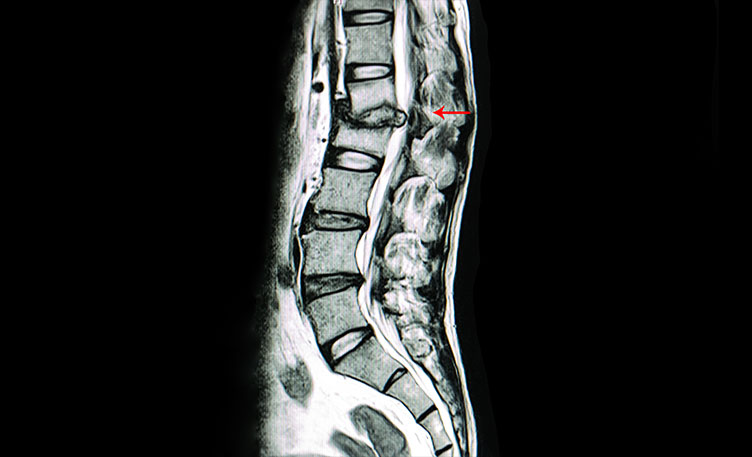
The Rare but Alarming: Spinal TB and its Complications
What is a spinal TB?
Tuberculosis (TB) is commonly thought to be a pulmonary illness that affects our lungs. However, this potentially severe infectious illness also affects other organs and tissues in the body. The spine is most commonly affected bone by tuberculosis infection. When tuberculosis spread to the spine it is known as Spinal TB. Spinal TB is also known as tuberculous spondylitis or Pott's disease. When it affects the spine, it causes an infection of the disc and associated spinal bone. In a period of time, it leads to the collapse of the spinal column and destruction of the vertebral body leading to a deformity known as kyphosis (hunchback).
What causes spinal TB?
Tuberculosis is known to be caused by an organism known as Mycobacterium tuberculosis that initially causes infection in the lung
When left untreated, it can easily extend to the spine and cause spinal arthritis. As the infection spreads to two adjacent joints, the spinal disc receives fewer nutrients and starts degrading. When a disc collapses, the vertebrae narrow and collapse as well, causing spinal cord injury.
How to identify spinal TB?
Once a person diagnosed with tuberculosis starts experiencing severe back pain, it is a most certain indication of TB in spinal cord. If this happens, get medical help from a qualified medical professional, such as an orthopedic spine surgeon. If the back pain worsens, the patient may be unable to stand or walk without experiencing numbness, discomfort, or weakness in the legs, among other symptoms.
Other spine TB symptoms include:
- Tenderness in the back area
- Spinal deformity
- Muscle spasms
- Restricted motion of the spine
- Neurological deficits.
As a result of spinal TB, neurological impairments such as reduced sensation, nerve root discomfort, and paraplegia can arise (paralysis of both legs). Weight loss, night sweats, fever, and bodily malaise or weakness are all indirect symptoms that might be associated with the condition.
Diagnosis of spinal TB?
In the early stages of spinal TB, it is often confused with arthritis. However, the nature of pain is very different in both illnesses. As a rule, those suffering from arthritis feel better at night when they lie down, but those with bone TB find that lying flat or on their back increases discomfort due to increased bacterial activity. The medical specialist takes a thorough history and with help of physical examination, signs, and symptoms observed come with an initial diagnosis. The following test helps in the final diagnosis of the TB in spinal cord:
- X-ray: As spinal TB usually begins with disc involvement and destruction; an x-ray will demonstrate disc height loss in the early phases of the disease.
- CT and MRI Scan: An MRI helps in identifying the infection around the affected disc as well as an adjacent vertebra in detail. It also helps in revealing any external spinal cord infections or damage to the vertebral body and spinal cord compression. In cases where MRI is not possible, a CT scan can provide detailed knowledge of bone anatomy.
- Biopsy: Once an infection is identified in the MRI it can be further evaluated with the help of a biopsy. It will give us the final confirmation that we have the right diagnosis.
- Culture and Sensitivity: It is used to identify the group of drugs that will be effective in each individual
- Other tests: blood test showing raised ESR and Mantoux test are additional tests used
What is the treatment for spinal TB?
The most common treatment approach for the management of TB spine includes drug therapy and surgical correctional.
Drug therapy:
It might take anywhere from six months to a year for tuberculosis of the spine to be treated. The doctor will determine the length of therapy based on the patient's assessment and may tailor it accordingly.
Patients with spinal TB may be prescribed isoniazid and rifampin-containing medicines. During the first few months of treatment, they may also be prescribed anti-TB medications such as ethambutol, streptomycin, or pyrazinamide,
Surgery
Surgery is often advised when there is a deformity in the spine. Even when the drug therapy is successful surgery is recommended as a preventative and corrective approach. The main reason for doing surgery are removal of the lesions, repair of deformities, support of the spine, and relief of spinal cord pressure.
What are the Complications of TB spine?
Although the chances of getting a spinal TB are rare (1- 3 %), once diagnosed it is a life-threatening condition. The longer it goes untreated, the more severe it may become. Some of the common complications are:
- Vertebral collapse leading to rounding or bending of your back (kyphosis)
- Spinal cord compression
- Formation of a cold abscess in the cervical region
- Severe infection which may progress to the mediastinum or trachea and other regions which may lead to sinus formation
- Severe neurological problems
- paralysis of the lower body






